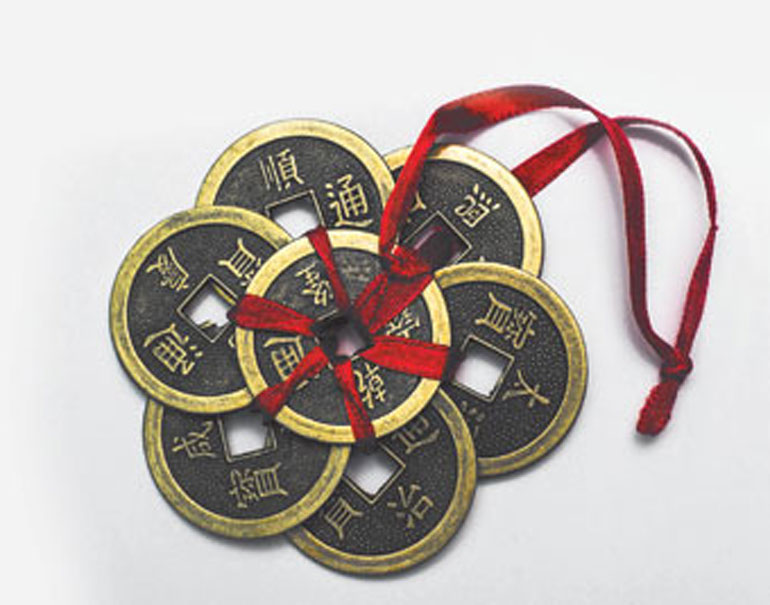Attracting good energy this new year

Feng shui has been a part of Filipino-Chinese culture even before the time of the Spaniards. As an ancient art — one that literally means ‘the way of wind and water’ — feng shui is one of the ways the ancients tried to make sense of the chaos of the universe, as the traditional practice aims to understand the energy forces of the environment.
The practice stems from the Taoist belief that within everything is chi, a life energy governed by the opposing yet complementary forces of yin and yang. According to Taoist belief, by balancing yin and yang within themselves and their surroundings, people can improve the flow of chi in their lives and keep negative chi away.
Feng shui is the art of arranging buildings, objects, furniture, and space in an environment in such a way to achieve harmony and balance with yin and yang.
According to National Geographic, though little is known about the origins of feng shui, the ancient Chinese may have been designing their homes and towns using feng shui principles for over four thousand years. Some early examples of feng shui can be found in the placement of ancient Chinese grave sites — areas where bringing positive chi was very important.
The tradition continues to remain strong today, as people all over the world use feng shui rules to decorate their homes. The goal is to create and maintain this vital balance between yin and yang energies, and assist the flow of chi throughout the home or office.
All about chi
In feng shui, one strives to achieve sheng chi, or an environment where positive energy or auspicious energy flows. Sheng means upward moving energy, and it is believed to generate a feeling of well-being and health, that same feeling of positive energy as one would have communing with nature through a stroll in the forest, a waterfall, a mountainside or a beach.
Among the many ways to achieve sheng chi and replicate that sense of well-being is getting rid of clutter inside and outside your home or office. This is because si chi, a passive and stagnant energy, is exuded by having a messy and disorganized environment. Si chi is a decaying form of energy, one which slowly eats away its surroundings. Things like dust, rubbish, debris, clutter, cobwebs, stagnant water, and other forms of grime have si chi, and one should keep them away from one’s home and place of business to mitigate their deteriorating nature.
Sha chi, meanwhile, is called the ‘killing energy’ with how it suppresses positive energy and destroys any growth. It can manifest in natural land formations, manmade buildings, objects, or places such as a street, cemetery, or bridge. Feng Shui dictates that straightforward energy flow, narrow and fast, carries a lot of sha chi, which carries positive energy away and replaces it with negative energy.
This means that a house or business, situated right at the end of a straight street, is continuously exposed to a clot of negative energy. Sha chi, like ball lightning, is attracted to it directly. Sha chi also manifests in sharp and jagged corners, such as the peaks of a mountain range, a rocky cliff, a corner of a tall building or an acute angle of the roof.
This is why feng shui encourages that access roads to houses and buildings be made to be slightly winding, and paths be made circular and not with right angles. Thus, negative energy is converted into positive.
Looking forward to 2022
The first of February marks the Year of the Thundering Water Tiger. Recognizing the hardships of recent years, Patrick Lim Fernandez of Yin and Yang Shop of Harmony, told The Philippine Star that welcoming the Chinese New Year with a festive mood, a clear frame of mind and an abundance of distinct, delicious and auspicious dishes could promote the harmony and rebirth that Filipinos need.
The Tiger, he said, brings a lot of yang energy, which is the type of chi that symbolizes strength and aggression. This represents the world’s energy as it remobilizes and awakens from the “slumber” that the pandemic has forced upon it, while also sparking activity in aspects of life such as business, careers, relationships, health, and prosperity.
“As the Year of the Ox comes to a close, we look forward to this coming Year of the Thundering Water Tiger 2022. As the world continues to cope with and manage this global pandemic, there is a light on the horizon. This is because the past three years were the winter years in the 12-year cycle of the Chinese zodiac. The years of the pig, rat and ox (2019 to 2021) belong to the most frigid of seasons,” Mr. Fernandez said.
“It is no wonder that the world had been in a mode of hibernation as is customary during wintertime. The coming year of the Tiger signifies the beginning of spring which will last for the next three years. As the world gets ready to re-emerge from a period of docility and lethargy, the tiger symbolizes a form of rebirth and reinvigoration,” he added. — Bjorn Biel M. Beltran


